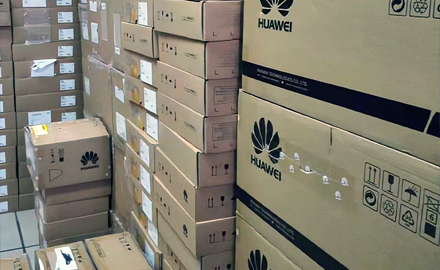Optical Line Terminal (OLT) is a crucial component in Passive Optical Network (PON) systems, which are used for fiber-optic communication in various scenarios like broadband internet delivery. Optical modules play a significant role in the operation and functionality of an OLT. Here are some applications of optical modules in an OLT:
Optical Transceivers: Optical modules, often referred to as optical transceivers, are used in OLTs to transmit and receive optical signals over the fiber-optic network. These transceivers can operate at different wavelengths, such as 1310nm or 1490nm for upstream transmission and 1490nm or 1550nm for downstream reception. They come in various form factors, such as SFP, SFP+, XFP, QSFP, etc., each designed for specific data rates and distances.
PON Technology Compatibility: OLTs in PON systems use specific optical modules tailored for the PON technology they support, such as GPON (Gigabit PON) or EPON (Ethernet PON). These modules ensure that the OLT can communicate effectively with the Optical Network Units (ONUs) located at the customer premises.
Wavelength Division Multiplexing (WDM): In some scenarios, WDM technology is employed to increase the capacity of the PON system by using multiple wavelengths on a single fiber. OLTs use WDM-compatible optical modules to transmit and receive multiple optical signals simultaneously, increasing the data throughput without laying additional fibers.
Long-Reach PON: Long-Reach PON (LR-PON) systems are designed to cover longer distances, often beyond the typical PON range. OLTs in LR-PONs use specialized optical modules capable of reaching greater distances while maintaining signal quality.
Coherent Optics: Coherent optical modules are used in advanced PON systems that require high data rates and long-distance communication. These modules use advanced modulation schemes and digital signal processing to achieve efficient transmission over longer fiber spans.
Redundancy and Reliability: Optical modules in OLTs can be configured with redundancy for increased reliability. This involves having duplicate modules that can take over if one fails, ensuring minimal service disruption.
Monitoring and Diagnostics: Many optical modules come with built-in monitoring and diagnostic capabilities. OLTs can utilize these features to monitor the health and performance of the optical links, helping to detect and troubleshoot issues quickly.
Flexible Deployment: Optical modules allow OLTs to be more flexible in terms of deployment. Different modules can be used based on the specific requirements of the network, such as distance, data rate, and technology.
Interoperability: Optical modules from different manufacturers might have different specifications and capabilities. OLTs need to support various types of optical modules to ensure interoperability with ONUs from different vendors.
Upgradability: As technology advances, newer and more efficient optical modules become available. OLTs can be upgraded with compatible optical modules to take advantage of higher data rates and improved performance.
In summary, optical modules in OLTs enable the transmission, reception, and management of optical signals in PON systems. Their various applications cater to different PON technologies, distances, data rates, and reliability requirements.
 What is the Role of EDFA in FTTH?
What is the Role of EDFA in FTTH?
 The Difference Between AX1800 ONU and AX3000 ONU
The Difference Between AX1800 ONU and AX3000 ONU
 How are Huawei OLTs Classified?
How are Huawei OLTs Classified?
 The Future Trend of Optical Line Terminals (OLTs)
The Future Trend of Optical Line Terminals (OLTs)